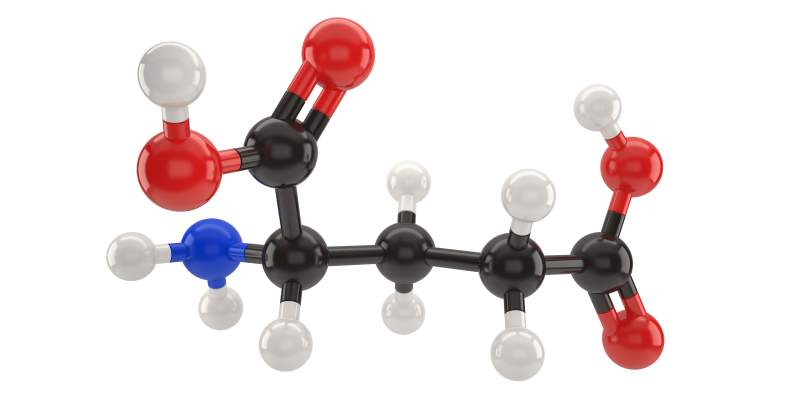If you’re curious about peptides or you’ve just started using them for research, it’s important to understand what they are and how they work. Read on to learn more about peptides today.
What is a Peptide?
 There are twenty different types of amino acids that can be combined to create a protein. There are various functions for proteins, including catalyzing metabolic reactions, replicating DNA, and working agonists or antagonists for certain hormones. The primary distinction to be made here is that a standing prerequisite for what can be considered a protein is a chain of fifty or more amino acids, often referred to as a polypeptide. When the linear chain is shorter than this, the chain is referred to as simply a peptide.
There are twenty different types of amino acids that can be combined to create a protein. There are various functions for proteins, including catalyzing metabolic reactions, replicating DNA, and working agonists or antagonists for certain hormones. The primary distinction to be made here is that a standing prerequisite for what can be considered a protein is a chain of fifty or more amino acids, often referred to as a polypeptide. When the linear chain is shorter than this, the chain is referred to as simply a peptide.
Peptides are some of the shortest chains of amino acids, and some to refer to them as small proteins. High quality peptides can be used for a variety of medical and research applications.
Peptide Classes
Peptides are divided into several different classes, all pertaining to the method of their production. There are milk, ribosomal, and nonribosomal peptides just to name a few. They can be created by the breaking down of digestive fluids, exposure to proteolysis, or even finding themselves subject to the enzymes that are quite specific to the biological composition of those who produce them. However, when discussing peptides specific to research work, it’s important to delve deeply into the fine art of laboratory synthesis, a process which has, in the past several decades, created great strides in finely tuning the production of peptides.
Peptide Synthesis
Peptides can be created by naturally occurring happenstance, or in research and medicine by careful synthesis that involves coupling the carboxyl group of one amino acid to the amino group of another.
Liquid phase synthesis is the most classical approach to this process, although in modern research laboratories, it has been replaced by solid phase synthesis. Liquid phase synthesis does retain a great deal of practical application in terms of production intended for industrial scale use.
Solid phase peptide synthesis, or SPPS, has been significantly optimized over the course of the past forty years. First pioneered by Robert Bruce Merrifield, the SPPS method has become the standard for how peptides are created in lab environments.
Small beads are treated on what have been come to know as “linkers,” on which chains of amino acids can be built. The wide and governing principle of SPPS is one of “deprotection-coupling-wash-coupling.” The stark advantage of SPPS is the ability to perform wash cycles after each and every induced reaction, removing any unwanted reagents.
Peptide Applications
The applications of these substances are truly as distinct and varied as the potential molecular compositions of the substances themselves. On the surface, the most obvious function is to deliver various necessary molecules into cells, a meticulous and fine tuned science involving substances known as cell penetrating peptides, more commonly referred to as CPPs. Delivering molecules to cells throughout the body opens up a lot of possibilities for peptides including treatment of a variety of illnesses.
Treatment of Diseases
A wide variety of therapeutic substances can be delivered on a molecular level to cells, such as nucleic acids and drugs. What’s even better is that these peptides are not only effective and easily categorized, but relatively cheap to produce. These CPPs can be readily and easily manipulated into applications such as gene expression and even tumor eradication. Not only can they be used to deliver helpful material to cells, but also carefully target corrupted or malignant cells.
Human Enhancement
In addition to the obvious medicinal and pharmaceutical benefits of the study, lab synthesized peptides have all found comfortable homes in the studies such as biochemistry and biology relating to polypeptides, including hormones and hormone analogues. There are currently many studies that are exploring the effects of peptides for muscle development, enhanced strength and endurance, weight loss, anti-aging, and much more.
Food Advancements
One use of peptides that shouldn’t be overlooked is in the creation of synthetic food substitutes. Aspartame, the zero-calorie sweetener that is used everything from soft drinks to weight-control foods, was developed by accident when a team of scientists were working on an anti-ulcer medication. The combination of asparatic acid with phenylalanine resulted in a byproduct that was nearly 200x sweeter than standard table sugar. This opened up the door for peptides to be looked at as a source of new advancements in the next generation of food.
Peptides in Modern Science
Peptide chemists have made incredible strides in the art of cellular reparation by pioneering the production of peptides in vast amounts. Studies on everything from cancer treatment to erectile dysfunction are being conducted to cure and treat some of the most devastating and prevalent diseases in the world.
